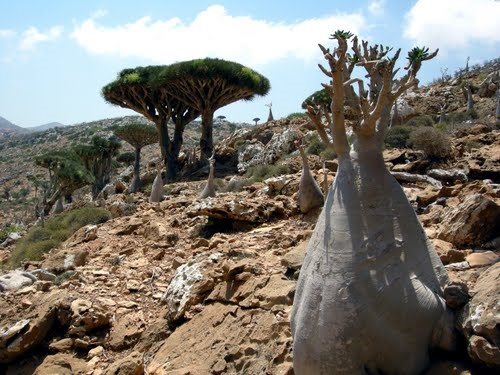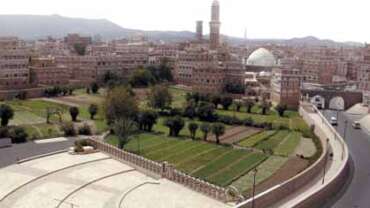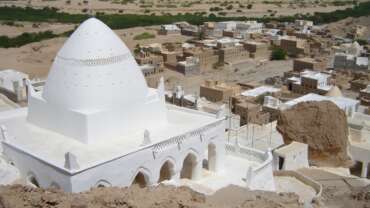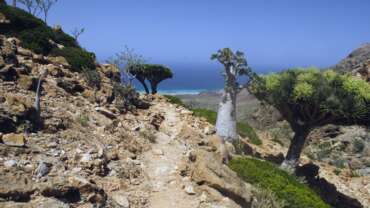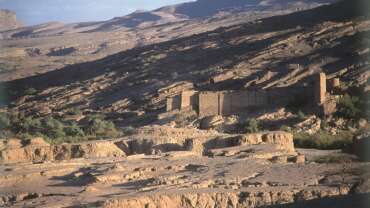UNESCO Sites in Yemen
Socotra Archipelago
Socotra Archipelago, in the northwest Indian Ocean near the Gulf of Aden, is 250 km long and comprises four islands and two rocky islets which appear as a prolongation of the Horn of Africa. The site is of universal importance because of its biodiversity with rich and distinct flora and fauna: 37% of Socotra’s 825 plant species, 90% of its reptile species and 95% of its land snail speciesdo not occur anywhere else in the world. The site also supports globally significant populations of land and sea birds (192 bird species, 44 of which breed on the islands while 85 are regular migrants), including a number of threatened species. The marine life of Socotra is also very diverse, with 253 species of reef-building corals, 730 species of coastal fish and 300 species of crab, lobster and shrimp.
Outstanding Universal Value
Values
Socotra is globally important for biodiversity conservation because of its exceptionally rich and distinct flora and fauna. Socotra is of particular importance to the Horn of Africa’s biodiversity hotspot and, as one of the most biodiversity rich and distinct islands in the world, has been termed the “Galápagos of the Indian Ocean”.
Criterion (x): Biological diversity and threatened species: Socotra is globally important for biodiversity conservation because of its exceptional level of biodiversity and endemism in many terrestrial and marine groups of organisms. Socotra is particularly important for its diversity of plants and has 825 plant species of which 307 (37%) are endemic. Socotra has high importance for bird species as underlined by the identification by Birdlife International of 22 Important Bird Areas on Socotra. Extremely high levels of endemism occur in Socotra’s reptiles (34 species, 90% endemism) and land snails (96 species, 95% endemism). The marine life of Socotra is also very diverse, and well represented in the property’s marine areas.
Integrity
The property is of sufficient size to adequately represent all the terrestrial and marine features and processes that are essential for the long term conservation of the archipelago’s rich and distinct biodiversity. The terrestrial nature sanctuaries, national parks and areas of special botanical interest included in the property encompass about 75% of the total land area. They protect all the major vegetation types, areas of high floral and faunal values, and important bird areas. The marine nature sanctuaries included in the property encompass the most important elements of marine biodiversity. The property’s integrity is further enhanced by terrestrial and marine buffer zones that are not part of the inscribed property.
Historic Town of Zabid
Zabid’s domestic and military architecture and its urban plan make it an outstanding archaeological and historical site. Besides being the capital of Yemen from the 13th to the 15th century, the city played an important role in the Arab and Muslim world for many centuries because of its Islamic university.
Old Walled City of Shibam
Province: Hadramout
Surrounded by a fortified wall, the 16th-century city of Shibam is one of the oldest and best examples of urban planning based on the principle of vertical construction. Its impressive tower-like structures rise out of the cliff and have given the city the nickname of ‘the Manhattan of the desert’.
Old City of Sana’a
Province: Sana’a
Situated in a mountain valley at an altitude of 2,200 m, Sana’a has been inhabited for more than 2,500 years. In the 7th and 8th centuries the city became a major centre for the propagation of Islam. This religious and political heritage can be seen in the 103 mosques, 14 hammams (local baths) and over 10,000 houses, all built before the 11th century. Sana’a’s many-storeyed tower-houses built of rammed earth (pisé) add to the beauty of the site.



